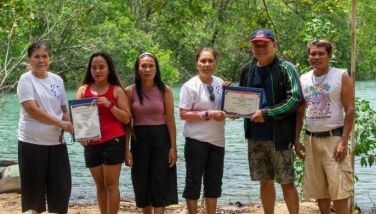10,000 hours of practicing science
How long does it take to become a world-class scientist?
In the last few decades, the question of optimal human performance has emerged as a focus of study by psychologists and other social scientists. One answer has become standard — an approximate, but quantifiable amount of time: 10,000 hours. The number comes from studies by Anders Ericsson, a psychologist from Florida State University, who studied virtuoso violinists. The number was further popularized by Malcolm Gladwell in his book “Outliers,” and by Matthew Syed in “Bounce.” The idea is that if you put in 10,000 hours of deliberate, purposeful practice into any human endeavor — playing the piano, learning chess, writing — you will become an expert.
Let’s put that in perspective. 10,000 hours is about three hours a day for 10 years. This 10-year timeframe for training has been documented by Ericsson and others to be the needed time for becoming an expert pianist, chess player, jet pilot, basketball player, musician, and yes — scientist. In his book “Talent is Overrated,” Geoff Colvin states that studies have shown that it takes about 10 years from their initial publication before scientists publish their best work.
But it is not as simple as putting in the hours. The key is practice that is focused, challenging, consistent, and with immediate useful feedback. What are the implications for training expert scientists in the Philippines?
First, this kind of practice is purposeful and deliberate. The goal should be clear. For budding researchers, the goal may be to conduct science that is publishable in internationally recognized (ISI) peer-reviewed journals. Or it may be to conduct research that directly leads to products or technologies that Filipinos will use to improve their lives. In any case, the goal should be NOT simply producing a final report that ends up in the “gray” literature. The specific steps in the training of a scientist includes: reading and understanding the pertinent literature, formulating hypotheses that can be tested adequately, designing experiments that yield sufficient results, putting together the materials and infrastructure needed, performing the actual experiments, analyzing the data thoroughly, and finally preparing the manuscript for publication. These specific steps should be the core of those 10,000 hours.
Second, this kind of deliberate practice (in any field) is hard work, and training to become a scientist is also hard work. Often, it is not fun while you’re in the middle of it; the steps described above are often frustrating. There are glimpses of triumph and fun, as when the manuscript is accepted for publication, but one really has to slog through and endure. This is where intrinsic motivation is essential. While extrinsic factors may drive the initial training, the budding scientist needs to get to a point where personal motivation takes over. Perhaps at some point, a “flow” state may be achieved. This is the state of optimal performance described extensively by Mihaly Csikzentmihalyi in his book “Flow.” Typically “flow” happens after mastery of skill, but perhaps mini-flow events can power intrinsic motivation. Dan Pink, in his book “Drive,” states that internal motivation occurs given autonomy, mastery, and purpose. These are good reminders for budding scientists.
Third, this deliberate practice has to challenging. It has to be attainable given the current level of skill sets, but it has to also push the individual beyond his/her normal boundaries. If it is too hard, then one gets frustrated; if it is too easy, then it is not serving the purpose of improvement and mastery. Thus, the choice of research topic and approach has to be done in a manner that would challenge (but not frustrate) a beginning scientist.
Fourth, there should be immediate useful feedback. Thus, the supervisor (the senior scientist) has to be a mentor in the truest sense. She should give honest evaluations that the budding scientist can use to improve. He should encourage a constructive atmosphere that is open and understanding yet critical, always with the intention of inducing improvement. Perhaps, the senior scientist should look at the example of Master Yoda, the master of exhortation, encouragement, and critique. Note too that the true mentor, like Yoda, allows the pupil to become the hero, and revels in the pupil’s success. We definitely need many scientific Filipino Yodas.
Like any controlled chemical reaction, all of these should occur in a conducive environment for this purposeful training to happen. Perhaps it starts in pre-school. Perhaps directing kids to science activities early on, providing continuing challenging work, and giving useful immediate feedback are the steps we need to consider as a society if we are to develop world-class scientists. The child who derives satisfaction in achieving specific goals is likely to continue to persevere, develop intrinsic motivation, and start logging in those hours throughout the elementary, high school, and college years.
The true insight from this “10,000 hour requirement” is not the formulaic exactness of how to achieve expertise. For the individual, the true insight is that there is no shortcut to success, and that there is no substitute for hard work. It is the realization that it is not talent that will define an individual’s success as a scientist. From a societal standpoint, we should understand that given the right conditions, any student can become a scientist, and success in science and research is not limited to those who show early talent.
* * *
Suggested reading:
Colvin, Geoff (2008). Talent Is Overrated: What Really Separates World-Class Performers from Everybody Else. New York: Penguin Group.
Csikszentmihalyi, Mihaly (1990). Flow: The Psychology of Optimal Experience. New York: Harper and Row.
Gladwell, Malcolm (2008). Outliers: The Story of Success. New York: Little, Brown and Co., Hachette.
Pink, Daniel (2009). Drive: The Surprising Truth about What Motivates Us. New York: Penguin Group.
Syed, Matthew (2010). Bounce: Mozart, Federer, Picasso, Beckham, and the Science of Success. New York: Harper.
* * *
Francis L. de los Reyes III is an associate professor of Environmental Engineering at North Carolina State University. He conducts research and teaches classes in environmental biotechnology, biological waste treatment, and molecular microbial ecology. He is on the editorial board of Water Research, was a 2008 Balik-Scientist of the DOST, and is a 2009 TED Fellow. He is a member of the Philippine-American Academy of Scientists and Engineers. E-mail at [email protected].
- Latest



























